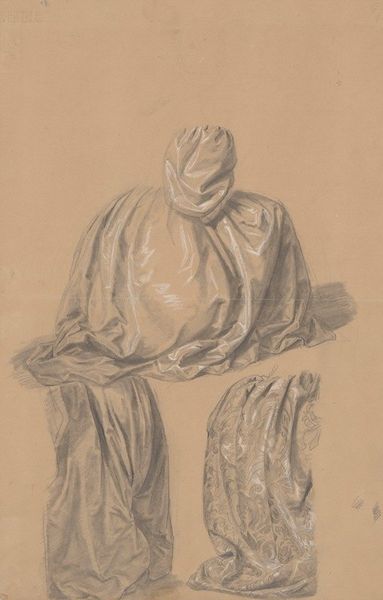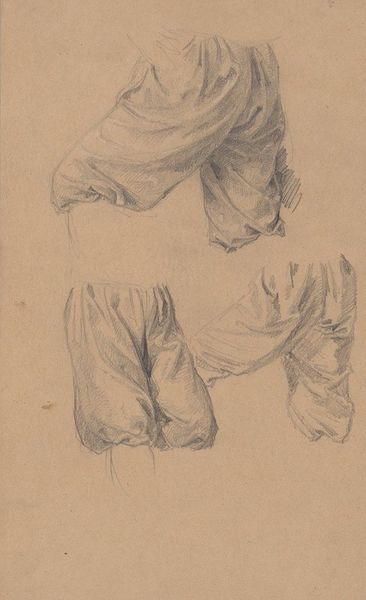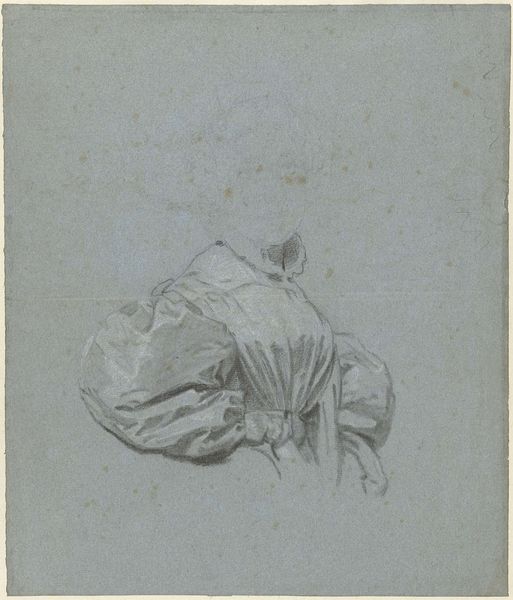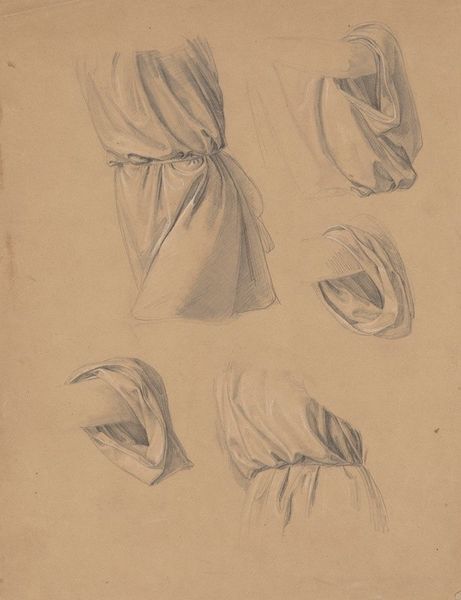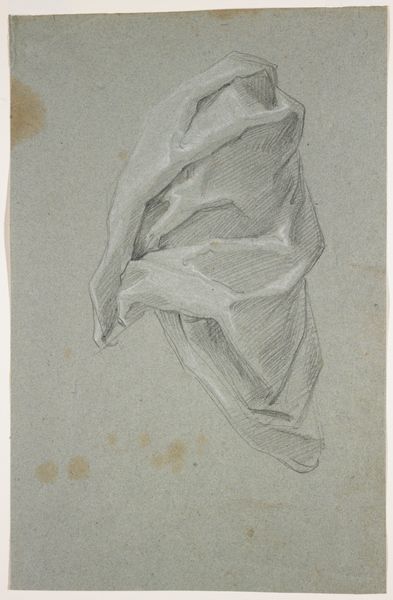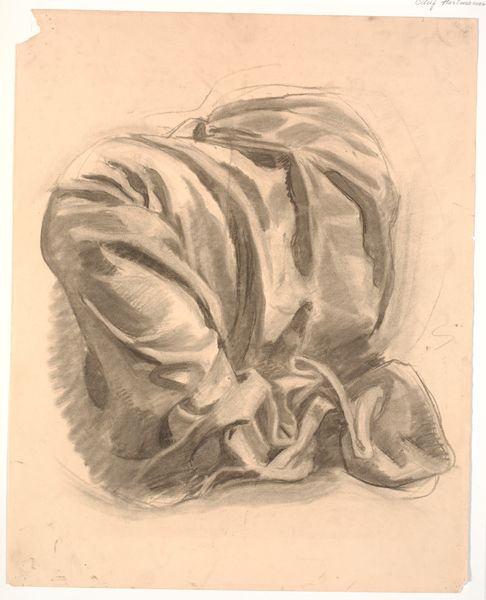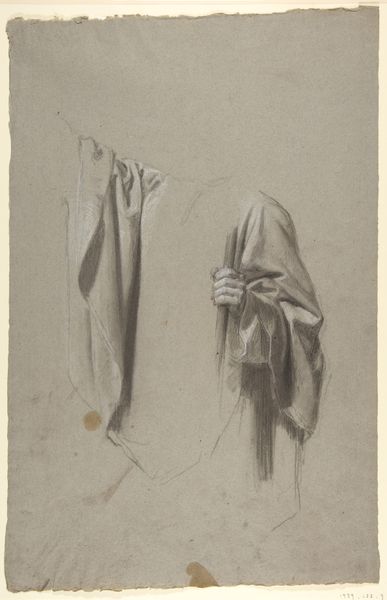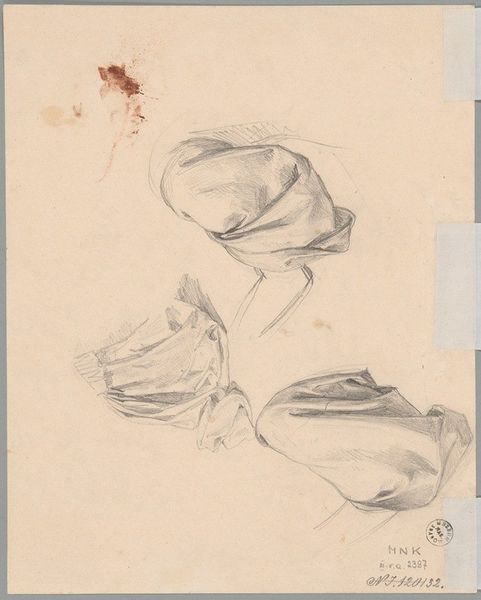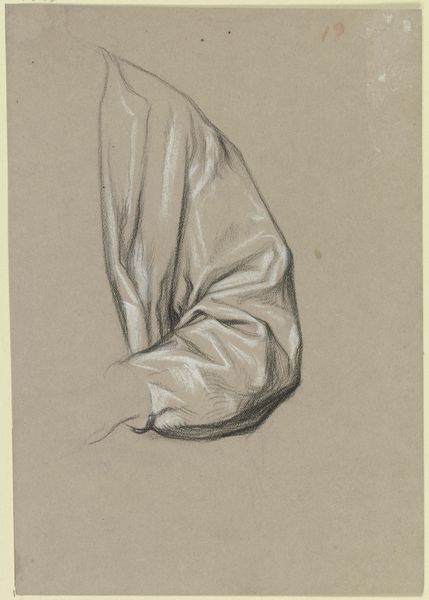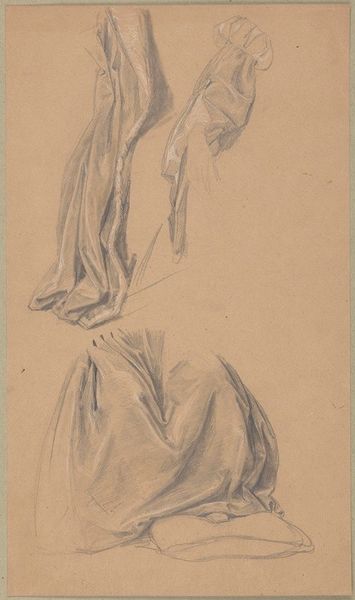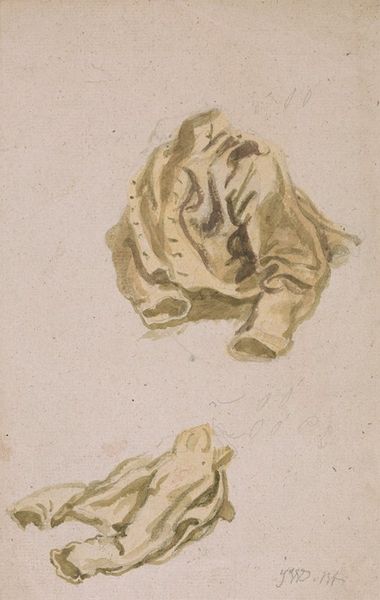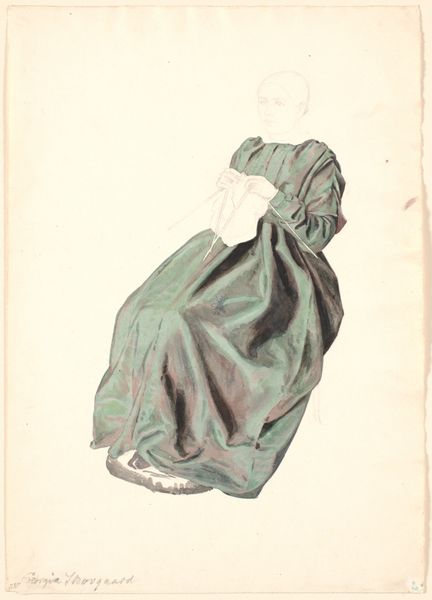
Studies of various parts of dresses for the painting ‘The Upbringing of Sigismund Augustus’ 1861
0:00
0:00
drawing, pencil
#
drawing
#
pencil
#
academic-art
#
realism
Copyright: Public Domain: Artvee
Curator: This drawing, crafted in 1861 by Józef Simmler, presents us with 'Studies of various parts of dresses for the painting "The Upbringing of Sigismund Augustus"'. The artist employed a medium of drawing with pencil to create it. Editor: Initially, the composition of cloth evokes a stark, academic approach; these shapes seem purposefully arranged to illuminate their weight and drape. You could almost imagine they’re ready for fitting, each fold waiting to assume shape and functionality on the figure. Curator: Precisely. These studies serve as a crucial step in Simmler's process. Examining them gives us an intimate glimpse into the preparation that goes into realizing grand historical painting, a hallmark of academic art production during that period. Notice the precise detail, aiming for naturalism through acute observation and representation. It exemplifies an emphasis on the accurate depiction of material culture within a historical narrative. Editor: The labor inherent in each graphite stroke is quite visible. You almost feel the texture of cloth rendered solely with light and shadow. This method draws attention not just to clothing but the artistry woven into the representation itself, mirroring actual textile craftsmanship in a tactile way. I imagine the physical and cognitive effort involved in recreating something as commonplace as fabric folds through lines on paper. Curator: Yes, the artist painstakingly researches the dress of 16th century Poland in service to constructing an accurate historical painting for a 19th-century audience—the social purpose of his paintings often focused on Poland’s rich heritage. In doing so, Simmler positions 'The Upbringing of Sigismund Augustus' within a broader historical discourse meant to evoke pride and reflect on Poland's narrative. The success and social impact of academic paintings were related to its skill, subject and audience it engaged. Editor: These preparatory sketches speak directly to the process of material transformation - linen into symbolic clothing - by turning that into aesthetic information on a flat surface using a chunk of graphite. It reflects the evolution from labor to artistic creation and a testament to art's profound engagement with craftsmanship, technique and purpose. Curator: It’s fascinating how an artwork's narrative deepens when appreciating the historical context of both its creation and its subject. Simmler clearly aimed to produce an educational narrative accessible to the public through meticulously drawn material. Editor: Absolutely, thinking about the actual labor informs an art’s ultimate value—the time involved, the choices of materials, how meaning becomes intricately entwined with how its forms get made.
Comments
No comments
Be the first to comment and join the conversation on the ultimate creative platform.
